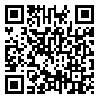BibTeX | RIS | EndNote | Medlars | ProCite | Reference Manager | RefWorks
Send citation to:
URL: http://bloodjournal.ir/article-1-682-en.html
Abstract
Background and Objectives
The identification of the genetic diversity and evolution of HIV-1 in the country needs constant molecular survey which could represent useful information to design new diagnostic and therapeutic strategies. Gene cloning strategy was used to evaluate the distribution and genetic diversity of the HIV-1 circulating forms.
Materials and Methods
Overal, 50 HIV-1 seropositive subjects were enrolled in the study. All of them were IDUs and had no history of antiretroviral therapy. The reverse-transcriptase genes of HIV-1 were amplified by nested RT-PCR using specific primers. Then, the RT gene of HIV-1 was cloned into a cloning vector PTZ-57R. Multiple clones from each patient were sequenced. The obtained sequences were aligned with the reference sequences, retrieved from the GenBank database. Multiple sequence alignments were performed by using the ClustalW 1.8 software package. Phylogenetic trees were generated by using the neighbor-joining plot.
Results
Of 50 serum samples, 30 were HIV RNA positive by nested RT-PCR. The nucleotide sequence analysis was performed on the RT genes from multiple clones. All samples were of HIV-1 CRF35-AD strains.
Conclusions
Data showed that CRF35-AD strain is the most prevalent in HIV infected patients. Information on the genetic diversity of viruses in patients and also viruses circulating in the community can be useful in design of diagnostic procedure, infection control programs and treatment.
| Rights and permissions | |
 |
This work is licensed under a Creative Commons Attribution-NonCommercial 4.0 International License. |





